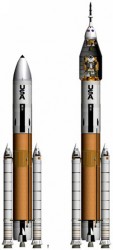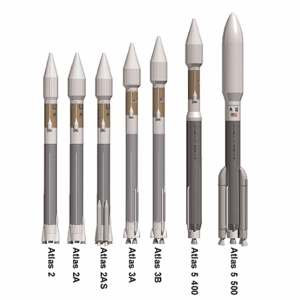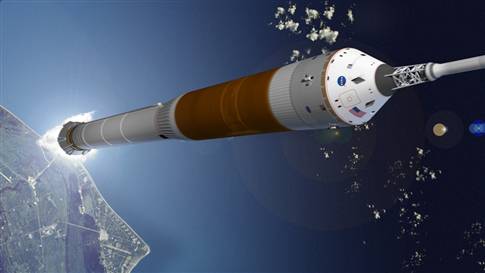[/caption]
Numerous news articles recently have reported problems with the Ares rocket. Some articles detailed critical design flaws, others wondered if Ares was doomed, others reported that Ares was on the US Congress’s “chopping block,” and still others purported that a different launch architecture would be superior to the Ares design. So many rumors were floating around that NASA felt the need to hold a press briefing yesterday to address the rumors and calm any fears that the Constellation program was on the verge of collapse. At the briefing, NASA officials said that while there are some challenges for the program to overcome, Ares is making outstanding progress toward flight. “Some recent news reports about Ares have been inaccurate and draw false conclusions,” said Steve Cook, who leads the development of the rocket.
But isn’t that what everyone expected them to say? Are they telling the truth? To get an unbiased look at the state of the Constellation program, Universe Today contacted Dr. Scott Pace, who is the Director for the Space Policy Institute at George Washington University in Washington, DC. Pace said the problems facing Ares are typical and not insurmountable, and that Constellation is the right choice for our country’s space program. “In my view,” said Dr. Pace, “if the nation is going to return to the Moon and eventually send humans to Mars, then political and technical realities argue that the Ares I, Orion, and Ares V are the way to go.”
Pace said the only reason not to use the Constellation architecture is if our nation decides it is content with staying in low Earth orbit or decides to cease its participation in government sponsored human spaceflight.
Pace discussed some of the issues being debated for the Ares rocket. “From my perspectives, there are a couple of things going on that can be broken down into 1) normal technical issues, 2) system engineering issues, and 3) architecture issues,” said Pace.

He said the thrust oscillation issue is a typical issue with all solid propellant motors and there are multiple ways to solve it. “As an analogy,” said Pace, “the pogo issue with Saturn on its first flights was much more serious.”
As for the launch pad drift problems and cross-wind limits on launch, these issues, too, have multiple solutions. “The fast start up of solids compared to liquids means less time to ‘drift,’” said Pace. “However, if a solid goes bad, it goes real bad, and that’s why the abort motor system on the Orion has to be proven to work from the launch pad up to high altitude.”
Pace believes a potentially more serious issue that should be resolved by modeling and test flights are the bending moments of the SRB “stick” itself in flight. “It’s built out of segments, not a single structure and lacks the stiffing of attachment to an External Tank (as with Shuttle and the Ares V design). This is a classic systems engineering problem,” said Pace, and deferred that NASA engineers are more qualified to comment on that issue.
Other issues are criticisms over the architecture choice of Ares I and V, over using an EELV (Evolved Expendable Launch Vehicle) for Orion or the DIRECT 2.0 design of the “Jupiter” rockets.

“The EELVs don’t have the performance to launch a 6-person Orion to ISS or take a 4-man crew to the Moon,” said Pace. “If one built a 3-4 person Orion to go only to ISS, it begs the question of what to do with the other ISS crew in an emergency and creates a potential government competitor for COTS providers.”
Pace said the use of EELV’s also means trying to creating a separate vehicle to provide lift to go to the Moon and Mars. “One could do the Moon with multiple EELV launches (as the Chinese might do with their Long March 5) at additional cost and risk over an Ares I and Ares V launch combination,” said Pace. “But you’re not going to Mars without a heavy-lifter like Ares V.”
Pace continued, “So, if we truly would like to go to Mars, build an Ares V and use it to make going to the Moon efficient. If we’re using an Ares V, separating humans onto a Ares I that shares much of the industrial base with the current Shuttle makes sense. This also allows an Orion capsule that can meet ISS and lunar requirements.”

Pace said EELVs could be useful for cargo to the ISS and, if someone were to pay for man-rating, they may even be useful for COTS crew missions. “But they can’t do the baseline government job of assuring U.S. human access to space.”
To make the Constellation program a success, Pace said NASA will need to focus on configuration control and consistency of analytical models, making sure the avionics interfaces are sufficient and being able to obtain adequate funding of full-scale tests.
* Author’s note: As an addendum, Dr. Pace said he has no problem with adding that he recently worked for NASA’s Program Analysis & Evaluation office, a fact I did not include in the article. “I understand that some may see that as a bias and perhaps relevant,” he said. Dr. Pace was named the Director of SPI in May 2008.


I hope NASA engineers can pull through all the setbacks and keep the Moon mission scheduled for 2020 and the “mars mission” scheduled for 2037 (I’ve seen that date published somewheres). Looking at the average age of a starting astronaut, I’d be very close to the age of a starting astronaut by the year 2037.
It looks like good work is being done, thanks for showing us where the problems in the Ares spacecraft lie.
Thank you for clarifying on what is going on. For now, lets hope these new ships will be completed as planned.
It would have been useful for this article to disclose that, until a few months ago, Dr. Pace was head of NASA’s PA&E division that, among other things, helped develop the ESAS concept that includes Ares and Orion. So, not exactly an unbiased source.
MMM if what Bob says is true then this interview is as biased as it can get ; contacting both this guy and the opposing design proponents would have been more interesting imho…debate anyone? A bit disappointing coming from a blog of this quality…
Anyway they wont go back now so might as well hope these rockets fly safely and in time.
The USA dominated space for more than 50 years but that will be soon over, the technological progress is stopped over 20 years ago and now goes backwards, see the Space Shuttle is going to be replaced by a firecracker, and it will be very soon that China , India and Europe and when Russia and Japan do an effort that they all will overhaul USA in nearby space exploration but also in exoplanetary visits. NASA is to big to many departments.
If its not Ares it will be something like Ares… only further down the road and costing even more money.
This is the kind of program we’ll need until someone comes up with a replacement for (or far more reliable) rocket engines
My main fear is how politicians have become growingly sensitive to the internet-rage that calls doom on anything someone out there does not like.
If a politician thinks they can convert an unpopular program (like constellation) into something popular (like food stamps), they are sure as hell going to attempt it.
Its not the kind if trouble we want to attract.
I hate to be a proponent for propaganda, but NASA would do well to promote a positive image in the publics mind. More good news than bad news wouldn’t hurt the cause.
2037 to go to Mars? Good Greif I wish they would hurry up, I’ll be nearly 80 then or perhaps long gone. They are so slow, go any slower they will be going backwards, or are they???
Nancy, that was a really good article. Way more objective that what Ian spits out usually.
Thank you.
It’s nice to hear positive articles like this – especially when it’s my tax dollars involved.
This one doesn’t pass the smell test. We get two seconds on EELV’s, actually nothing about Jupiter, and a toss off of the problems of Ares, especially Ares I. What is ignored is the timing problem. The schedule on Ares will cause us to lose a great chunk of the talent while gaining very little. Ares I cannot even resupply the ISS, and is barely able to reach it as a crew vehicle. Ares V is not even contemplated as human rated, and is not designed to act as a ferry for major pieces of the ISS. Jupiter is designed to have a much shorter time to human rating, has large safety margins, does not require the redesign of the SRB’s, and can fully support and resupply ISS, while providing slightly more capacity than Ares I plus V for a Moon flight. Jupiter is upgradeable to greater capacity than Ares V, while requiring almost zero changes to the launch facility. Ares I and V require separate and different launch facilities, both significantly different than the shuttle, costing tons of money, taking up valuable pad space, and for Ares V, requiring upgrade of the transporter path capacity, and possibly the transporter itself. Since the Jupiter uses an only slightly modified external tank and the SRB’s, completely unmodified, we don’t have to figure out whether some new SRB can stand on it’s own. From what I know of NASA estimates, Ares I will be at least two years late, and require all new technology, while Ares V will require even more new technology, a major redesign and upgrade of the external tank, and all of it will require double the R&D dollars of something like Jupiter. The only thing in the Jupiter setup that has to be redeveloped is the second stage J2 series engine, and the Moon can be reached without that upgrade, allowing a much longer and cheaper horizon for that R&D. Ares also does not meet the enabling legislation requiring reuse of shuttle technology, as it will cause us to throw away an enormous amount of existing SRB hardware and the whole current SRB production line, for not much gain. It will also cause an almost complete redesign of the external tank, again losing much of the advantage of existing production facilities. The insulation problems of the existing tank are not relevant to Jupiter or Ares. NASA needs to be forced to abandon Ares and reuse what they have. We will get better and more reliable rockets with sufficient capacity to loft almost anything, just by getting rid of the shuttle itself. Then, the only thing that really will need some effort is the Constellation crew vehicle and the Moon lander, which is the same for either path. The upgraded versions of the Jupiter can then easily reach close to a million pounds to orbit per launch, which should easily allow for whatever we wish to do for Mars.